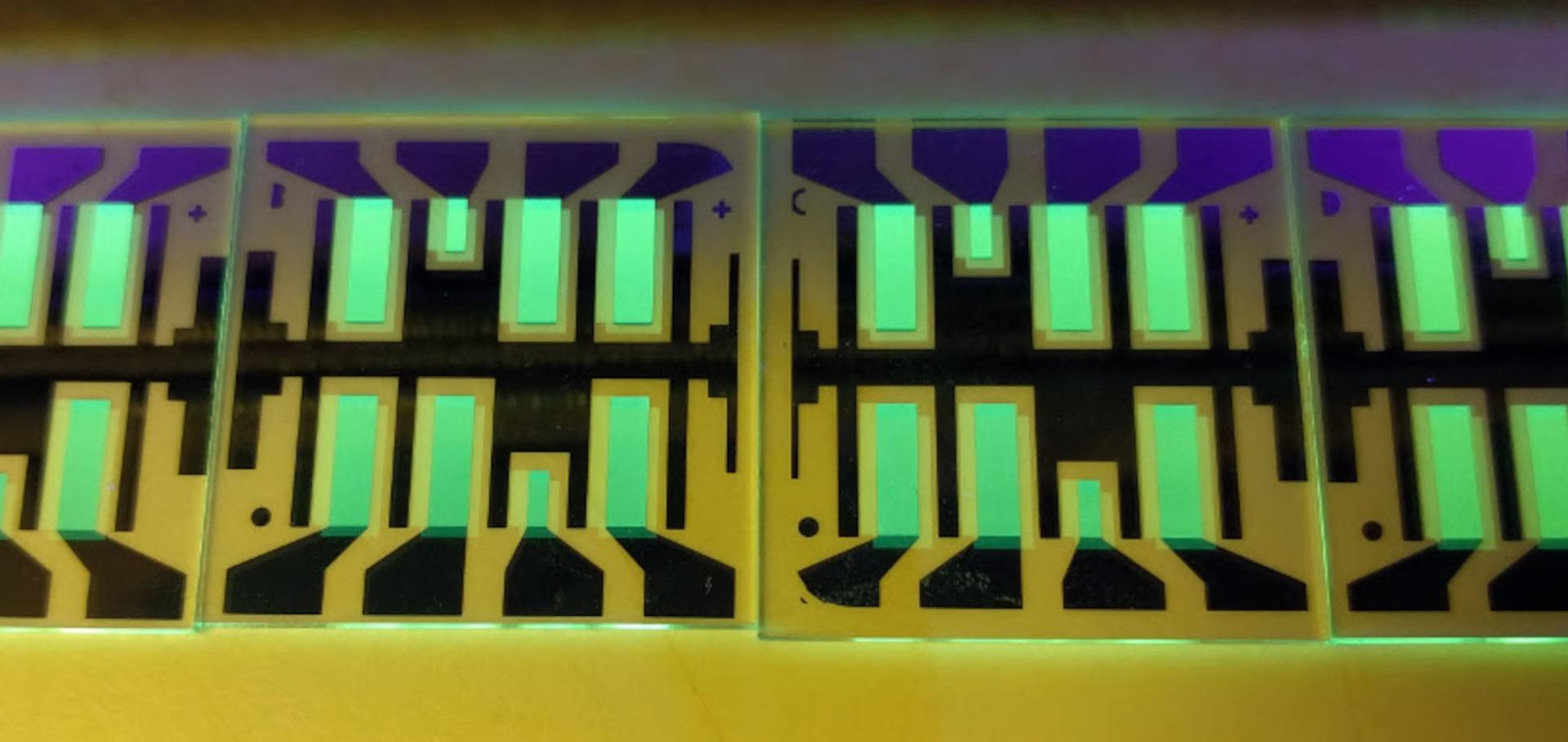4.13 Organic Semiconductors
Chapter in Comprehensive Semiconductor Science and Technology, Elsevier (2011) 448-507
Open circuit voltage and IV curve shape of ZnPc:C60 solar cells with varied mixing ratio and hole transport layer
Journal of Photonics for Energy 1:1 (2011)
Abstract:
In this contribution the effect of changes in the activematerial system and modification of contact properties in organic solar cells is investigated at the example of ZnPc:C60 small molecule solar cells. Devices with different blend mixing ratios and a variation of hole transport layer are prepared by vacuum deposition and compared to drift-diffusion simulation data. It is shown that the open circuit voltage is mainly defined by themixing ratio,whereas the fill factor is strongly influenced by the choice of hole transport layer. Extraction barriers for photogenerated holes lead to S-shaped IV curves. The strength of the S-shape scales with the height of the extraction barrier. The slope of the IV curves at open circuit suggests that the observed increase in open circuit voltage with a higher amount of C60 in the blend might be due to a downshift of the highest occupied molecular orbital of ZnPc. © 2011 Society of Photo-Optical Instrumentation Engineers (SPIE).Optimization of organic tandem solar cells based on small molecules
Conference Record of the IEEE Photovoltaic Specialists Conference (2010) 513-517
Abstract:
Organic solar cells (OSC) have attracted growing attention in recent years and their development has reached a stage at which several companies are preparing to make them commercially available either as standalone products or integrated into other device. There are different production routes for OSC: one very promising approach uses thermal evaporation of small organic molecules in vacuum, i.e. the same approach that is used in all current commercial manufacturing of organic LEDs. We use vacuum processing to create an organic stack in the p-i-n concept. In this concept the intrinsic absorber layers are sandwiched between p- and n-doped wide gap transport layers which leads to a nearly ideal solar cell structure and offers a stable platform both for investigation of fundamental processes and device optimization. In recent years it was found that the device operation crucially depends on the morphology of the bulk heterojunction and that optical interference effects in the organic stack play an important role for light absorption. We show here how the morphology of the organic layers can be controlled in vacuum deposited layers, and describe the optical optimization of tandem solar cells, for which an efficient recombination contact and current matching are essential requirements. Applying these principles and subsequently combining two complementary absorbing subcells lead to a tandem organic solar cell with an independently certified efficiency of 6.07% on 2cm2 device area, i.e. the first OSC over 6% on module relevant dimensions. © 2010 IEEE.Ageing-dependent properties of ZnPc/C60 photovoltaic devices
Functional Materials 17:3 (2010) 317-323
Abstract:
The ZnPc/C60 solar cells with a reasonable energy conversion efficiency of -1.5% were investigated. The samples were aged for 1269 hours upon illumination by the blue LED with peak emission at 475nm. Upon ageing, the devices have shown a strong and fast degradation of the efficiency, short circuit current and of the fill factor within several hours followed by a much slower decrease thereof. The carrier mobility dependences on electric field strength at different temperatures were measured by the Charge Extraction by Linearly Increasing Voltage method. The observed drop of device current cannot be explained be only mobility decrease. The increase of the effective barrier height by about 0.1eV from -0.55eV up to -0.65eV was observed in the aged samples. Meanwhile, thermal activation energy values of the electrical conductivity grew from about 0.28eV prior to degradation up to about 0.34eV after ageing. © 2010 - STC "Institute for Scientific Cruystals".Numerical drift-diffusion modeling of organic solar cells in comparison with experimental data series
10th International Conference on Numerical Simulation of Optoelectronic Devices, NUSOD 2010 (2010) 33-34


